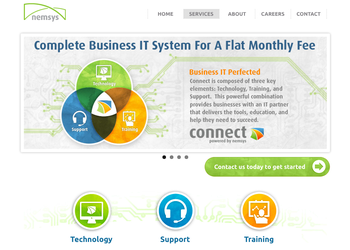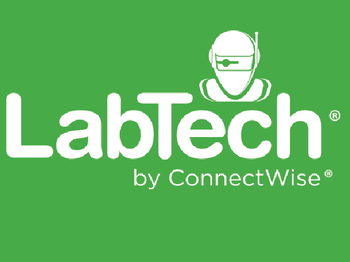For Founder Nachtrab, LabTech Run Could Be Tough Act to Follow
After stepping down last year as president and COO at ConnectWise, the serial entrepreneur hopes a new role at eFolder will help him recapture the thrill and challenge of guiding a company through dramatic growth.

To onlookers, Matt Nachtrab’s road to business success appears charmed.
By age 40, the co-founder of remote monitoring and management (RMM) pioneer LabTech has already gestated a fledgling software startup into a viable player, then orchestrated a merger with ConnectWise that helped scale the company into one of the most indispensable technologies in the managed services provider (MSP) space.
But Nachtrab recalls a time before those heady days, when his management style wasn’t necessarily revered by every staff member at the Toledo, Ohio, MSP he launched in 1999.
“They called me ‘The Seagull,’” Nachtrab said of the company he ran remotely while obtaining an MBA from Indiana University. “I’d sh*t all over the operation, then fly away.”
A lot has changed since then, but Nachtrab says he never lost the drive to grow companies – his and his customers’ – by leveraging technology to solve problems.
It’s that calling, he said, that caused him to walk away from his day-to-day job as president and chief operating officer at ConnectWise last year. He began a new position in recent weeks as chief strategy officer for feisty cloud storage firm eFolder.
This week, MSPmentor caught up with Nachtrab, who described the ups and downs of his ride to relevance in the IT services toolset business.
MSP at heart
After wrapping up grad school, the computer science major decided to pass up a cushy job at Ford Motor Co., and return full-time to his working-class hometown to run Nemsys, an MSP he started as a way to help manage the computers at his dad’s conglomerate.
 At the time, Nachtrab, who still owns Nemsys with co-founder Drew McCallum, got a rude reception.
At the time, Nachtrab, who still owns Nemsys with co-founder Drew McCallum, got a rude reception.
“The week I got back, my lead engineer quit and took our two largest customers,” he recalled. “It reduced our revenue by $5,000 a month.”
Broke and struggling with cash flow, Nachtrab took over sales duties and applied some advice from his father.
“I would have lunch five times a week with someone who could hire us or who could refer business,” he said.
Nemsys’ book of business grew slowly, one or two customers a week, until the MSP was back above water.
Developing new technologies was borne out of necessity.
“We bundled monitoring with some servers into an RMM,” Nachtrab said. “We had timekeeping, passwords, monitoring networks; we started developing and trying to bring everything together into one system.”
They hired a developer and by 2004, the company launched an early RMM suite they dubbed “Nem Service.”
“We actually launched a service offering around the Nem Service,” Nachtrab said.
He called it LabTech
While searching for a developer to help pull together Nem Service, Nemsys interviewed Greg Buerk.
Though Nachtrab and McCallum recognized he was talented, Buerk wanted equity and the current ownership decided against cutting him in.
Buerk didn’t get the job.
Still, they stayed in touch.
“Drew kept Greg up to speed on Nem Service and Greg created his own version,” Nachtrab said. “He called it LabTech.”
Buerk’s version was a significant improvement on Nemsys’ RMM.
“He built it completely from his head,” Nachtrab said. “It wasn’t what we made. It was so much more powerful.”
Nachtrab’s next move was obvious.
“Why don’t we team up somehow,” he recalls suggesting.
The trio developed a new operating agreement and created LabTech.
Johnny Walker, an MSP from the U.K., was among the pilot customers of the new tool and became instrumental to helping refine the software.
“Once we got it working, we put password tracking software, timekeeping; it was a very light PSA and RMM,” Nachtrab said. “I was just building it to use at Nemsys, (but) I started getting calls from folks.”
‘We really have something’
Spinning off LabTech as its own company was like lighting a rocket.
They set a price of $25 per agent and inquiries started coming in from all over.
“We were getting sales right away,” Nachtrab said. “We were having a lot of fun. It did put a strain on Nemsys.”
He remembers a $40,000-plus sale to a school district.
Then there was a significant cash deal with a company out of the Netherlands. In that sale, an MSP had downloaded a trial of LabTech and fired off a list of 35 follow-up questions.
Nachtrab remembers getting the email late at night and immediately working on a reply. He answered about 20 of the questions, then tapped his colleagues to respond to the others.
“We had the answers back before many companies would have even started trying (to respond),” Nachtrab said. “He said, ‘I’d like to buy it.’”
“I sent him the wiring instructions for $10,000,” Nachtrab continued. “I’ll never forget the feeling because I was like, ‘we really have something.’”
Nachtrab and his partners took their new tool on the road and started doing trade shows. From Microsoft Partners, to SMB Nation, there was plenty of buzz, as well as plenty of questions about integrations.
Since Nemsys used StorageCraft, Buerk had created a LabTech interface for that. But that was about it.
“People would ask ‘do you integrate with Tigerpaw, or do you integrate with ConnectWise?’” Nachtrab recalled. “We needed those interfaces to enter the RMM market in any significant way.”
Buerk went to work again, in a hurry.
“Greg created this really open framework and he used every API call,” Nachtrab said. “In two weeks, we started getting the attention of IT solution providers.”
ConnectWise takes an interest, then a stake
That attention was turning into tangible results for LabTech.
“Cash was starting to pile up,” Nachtrab said.
About the turn of the decade, buzz about LabTech made its way to the C-suite at ConnectWise, where founders Arnie and David Bellini had recently launched a capital fund and incubator for promising IT services technologies.
Nachtrab was invited on short notice to do an informational webinar for the ConnectWise sales team.
“Arnie popped in on that meeting,” he said.
In fact, Nachtrab soon realized he was presenting to most of the ConnectWise leadership team.
Bellini was impressed.
“He saw that it was agent driven, that we own all the underlying technology,” Nachtrab said. “(Our companies) had a lot of similarities: They both formed out of MSPs.
“We started talking about doing a joint venture.”
ConnectWise began investing in LabTech around Feb. 10, 2010, Nachtrab remembers, and things changed even more, even faster.
“To date, LabTech had sold about $1 million,” he said. “In 18 days in February, we matched that.”
Rapid growth, important lessons
LabTech’s owners moved from Toledo and headed for ConnectWise headquarters in Tampa, Fla.
Nachtrab recalls packing up his Porsche Boxster – his Keurig single-cup coffee maker in the passenger seat – and driving south to his new life.
“We decided to grow the joint venture out of our office in Tampa,” he said. “We took a lot of the framework that (ConnectWise) used and duplicated it.”
Johnnie Walker, the pilot customer, joined the team as head of operations.
“He’s just a very intelligent and very reliable and creative person,” Nachtrab said. “He scaled operations; support, onboarding and implementation, and the training team.”
But the rapid growth came with plenty of headaches.
 “We really scaled fast,” Nachtrab remembers. “The biggest challenge was that LabTech was a very technical product and we had problems getting people who knew the product better than the customers.”
“We really scaled fast,” Nachtrab remembers. “The biggest challenge was that LabTech was a very technical product and we had problems getting people who knew the product better than the customers.”
There was no formal employee-training program in those days, and when a particularly difficult support problem popped up, Buerk himself would roll up his sleeves and find a resolution.
That lack of a developed support apparatus came back to haunt LabTech in a major way.
“I think we were well over 1,000 partners, and we had a release in 2011-2012 that didn’t go well,” Nachtrab said. “The customers self-hosted and we brought a lot of their servers down.”
Without a built-out support process, LabTech wasn’t set up to handle the flood of desperate customers.
They learned a lot of important lessons.
“When you get to be a software company that has a lot of partners, the release process is very critical,” Nachtrab said. “Your support process needs to be very, very cautious.”
“We learned to not do too many database updates during a software release,” he added. “We matured the beta and pilot process. We had to mature the support process.”
‘I wanted to do something else’
By 2014, LabTech was a healthy and important component of ConnectWise, and the companies began moving toward a more thorough union.
“I think the intention of the joint venture from the beginning was to scale up and then merge with ConnectWise,” Nachtrab said. “We took the investment, ConnectWise and LabTech shared the same customer base, we ended up scaling together, we had cost-sharing; the merger was just the next, very logical step.”
The merger was completed in 2015, after which Nachtrab settled into his role as an executive and a member of ConnectWise’s board of directors.
But by spring of 2016, Nachtrab said he became antsy for the next challenge.
“I figured, I got it to a really safe place,” he said of LabTech. “From an operational, day-to-day basis, I wanted to do something else.”
Nachtrab stepped away from his hands-on role, but held onto his seat on the board.
“It was harder than I thought,” he said of relinquishing day-to-day control. “I don’t know if I can be happier, but it was challenging.”
“I had all of my friends there,” Nachtrab went on. “The separation was much more difficult than I expected.”
He wanted to stay in the MSP space but knew he didn’t want to go to a company that sold RMM, PSA or a  quoting solution. Backup seemed to make sense.
quoting solution. Backup seemed to make sense.
Nachtrab reached out to Kevin Hoffman, CEO at eFolder, a company that had made some smart acquisitions and appeared poised for significant growth.
“I told him, ‘I don’t know what I can do to help you: board, advisory role,’” he said. “Kevin and the team and the board came to me with chief strategy officer.”
Nachtrab insists it’s precisely the type of opportunity he was hoping for.
“I think they’re going in a great direction,” he said. “If you think about it, I think the story is pretty darn consistent: You have an entrepreneur who has experience and expertise in scaling companies.”
He added: “I turned 40 last year. I have a family. It’s really important to me that I enjoy going to work every day.”
Send tips and news to [email protected].
Read more about:
MSPsAbout the Author
You May Also Like


